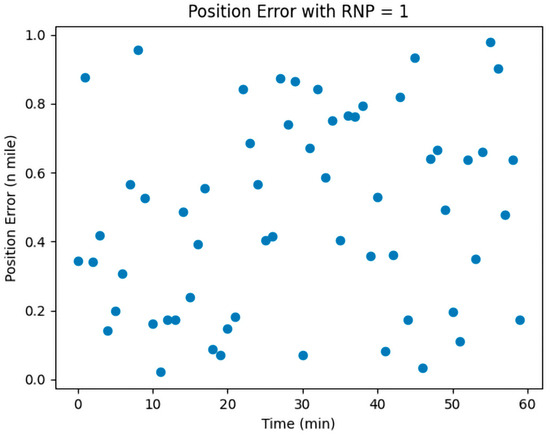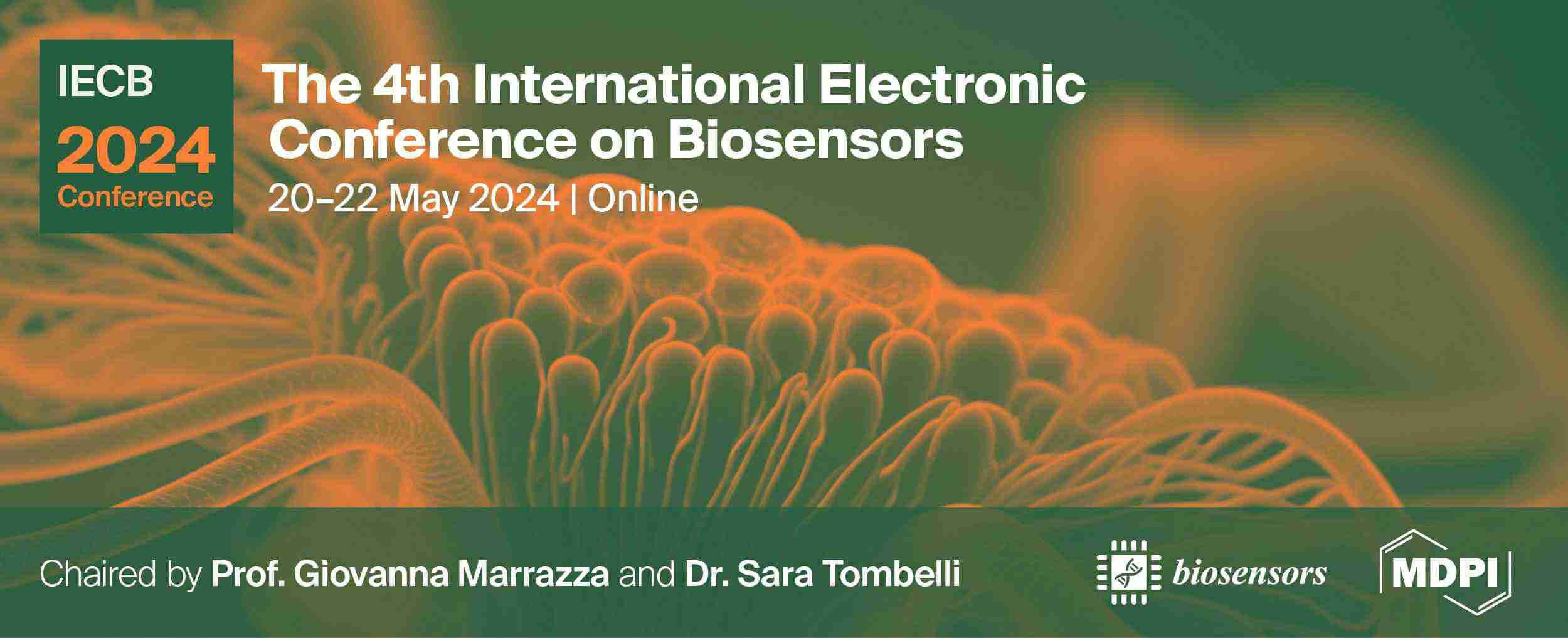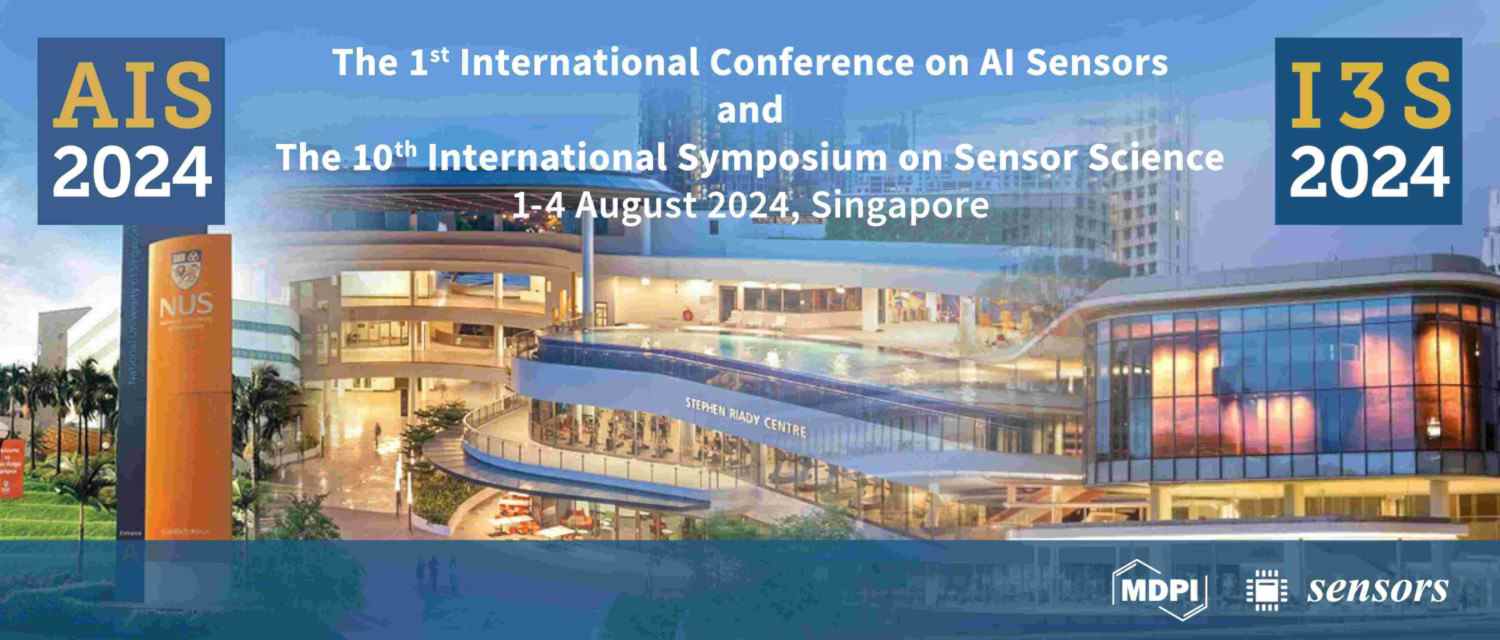-
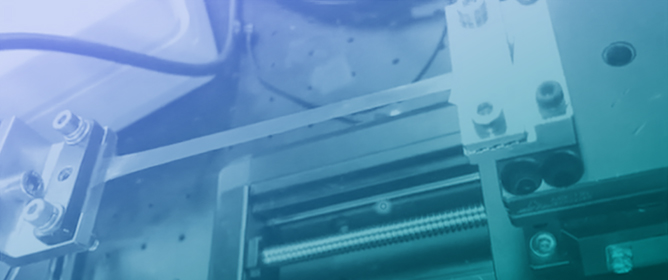 Enhancement in Capacitance of i- EAP-Based Strain Sensors
Enhancement in Capacitance of i- EAP-Based Strain Sensors -
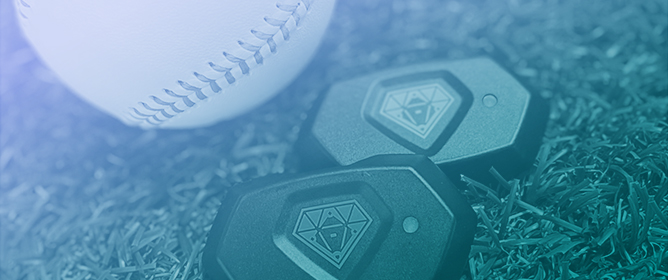 Machine Learning Approach for Pitch Type Classification Based on Pelvis and Trunk Kinematics Captured with Wearable Sensors
Machine Learning Approach for Pitch Type Classification Based on Pelvis and Trunk Kinematics Captured with Wearable Sensors -
 Design, Implementation, and Characterization of a Signal Acquisition Chain for SADino: The Precursor of the Italian Low-Frequency Telescope Named the Sardinia Aperture Array Demonstrator (SAAD)
Design, Implementation, and Characterization of a Signal Acquisition Chain for SADino: The Precursor of the Italian Low-Frequency Telescope Named the Sardinia Aperture Array Demonstrator (SAAD) -
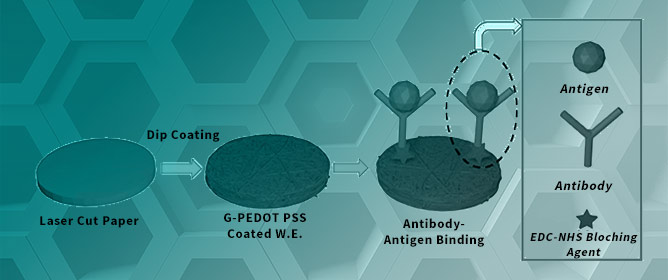 A Facile Graphene Conductive Polymer Paper Based Biosensor for Dopamine, TNF-α, and IL-6 Detection
A Facile Graphene Conductive Polymer Paper Based Biosensor for Dopamine, TNF-α, and IL-6 Detection
Journal Description
Sensors
Sensors
is an international, peer-reviewed, open access journal on the science and technology of sensors. Sensors is published semimonthly online by MDPI. The Polish Society of Applied Electromagnetics (PTZE), Japan Society of Photogrammetry and Remote Sensing (JSPRS), Spanish Society of Biomedical Engineering (SEIB) and International Society for the Measurement of Physical Behaviour (ISMPB) are affiliated with Sensors and their members receive a discount on the article processing charges.
- Open Access — free for readers, with article processing charges (APC) paid by authors or their institutions.
- High Visibility: indexed within Scopus, SCIE (Web of Science), PubMed, MEDLINE, PMC, Ei Compendex, Inspec, Astrophysics Data System, and other databases.
- Journal Rank: JCR - Q2 (Instruments & Instrumentation) / CiteScore - Q1 (Instrumentation)
- Rapid Publication: manuscripts are peer-reviewed and a first decision is provided to authors approximately 17 days after submission; acceptance to publication is undertaken in 2.8 days (median values for papers published in this journal in the second half of 2023).
- Recognition of Reviewers: reviewers who provide timely, thorough peer-review reports receive vouchers entitling them to a discount on the APC of their next publication in any MDPI journal, in appreciation of the work done.
- Testimonials: See what our editors and authors say about Sensors.
- Companion journals for Sensors include: Chips, Automation, JCP and Targets.
Impact Factor:
3.9 (2022);
5-Year Impact Factor:
4.1 (2022)
Latest Articles
Research on Lateral Safety Spacing for Fusion Operation Based on Unmanned and Manned Aircraft-Event Modeling
Sensors 2024, 24(2), 553; https://doi.org/10.3390/s24020553 (registering DOI) - 16 Jan 2024
Abstract
With the rapid development of unmanned aerial vehicle technology and its increasing application across various fields, current airspace resources are insufficient for unmanned aerial vehicles’ needs. This paper, taking Zigong General Aviation Airport in Sichuan as a case study, explores the lateral safety
[...] Read more.
With the rapid development of unmanned aerial vehicle technology and its increasing application across various fields, current airspace resources are insufficient for unmanned aerial vehicles’ needs. This paper, taking Zigong General Aviation Airport in Sichuan as a case study, explores the lateral safety spacing in a mixed operation mode of unmanned aerial vehicles and manned aircraft. Currently, there are no standardized regulations for the safe spacing of the fusion operation of unmanned and manned aircraft. Theoretical research is essential to provide a reference for actual operations. It introduces the UM-Event (unmanned and manned aircraft-event) collision risk model, an adaptation of the Event collision risk model, considering factors like communication, navigation, surveillance performance, human factors, collision avoidance equipment performance, and meteorology. Safety spacing was determined via simulation experiments and actual data analysis, adhering to the target safety level (TSL). Findings indicate that surveillance performance has a minor impact on safety spacing, while communication and navigation significantly influence it. The safety spacing, influenced solely by CNS (communication performance, navigation performance, surveillance performance) and combined factors, increased from 4.42 to 4.47 nautical miles. These results offer theoretical guidance for unmanned aerial vehicle safety in non-segregated airspace.
Full article
(This article belongs to the Special Issue Advances and Applications in Aerial Unmanned Robots: Sensing, Planning, and Control)
►
Show Figures
Open AccessArticle
LeGO-LOAM-FN: An Improved Simultaneous Localization and Mapping Method Fusing LeGO-LOAM, Faster_GICP and NDT in Complex Orchard Environments
Sensors 2024, 24(2), 551; https://doi.org/10.3390/s24020551 (registering DOI) - 16 Jan 2024
Abstract
To solve the problem of cumulative errors when robots build maps in complex orchard environments due to their large scene size, similar features, and unstable motion, this study proposes a loopback registration algorithm based on the fusion of Faster Generalized Iterative Closest Point
[...] Read more.
To solve the problem of cumulative errors when robots build maps in complex orchard environments due to their large scene size, similar features, and unstable motion, this study proposes a loopback registration algorithm based on the fusion of Faster Generalized Iterative Closest Point (Faster_GICP) and Normal Distributions Transform (NDT). First, the algorithm creates a K-Dimensional tree (KD-Tree) structure to eliminate the dynamic obstacle point clouds. Then, the method uses a two-step point filter to reduce the number of feature points of the current frame used for matching and the number of data used for optimization. It also calculates the matching degree of normal distribution probability by meshing the point cloud, and optimizes the precision registration using the Hessian matrix method. In the complex orchard environment with multiple loopback events, the root mean square error and standard deviation of the trajectory of the LeGO-LOAM-FN algorithm are 0.45 m and 0.26 m which are 67% and 73% higher than those of the loopback registration algorithm in the Lightweight and Ground-Optimized LiDAR Odometry and Mapping on Variable Terrain (LeGO-LOAM), respectively. The study proves that this method effectively reduces the influence of the cumulative error, and provides technical support for intelligent operation in the orchard environment.
Full article
(This article belongs to the Section Smart Agriculture)
►▼
Show Figures
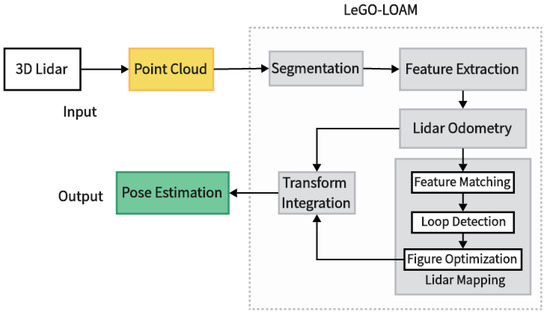
Figure 1
Open AccessArticle
GPS-Free Wireless Precise Positioning System for Automatic Flying and Landing Application of Shipborne Unmanned Aerial Vehicle
by
, , , , , , , and
Sensors 2024, 24(2), 550; https://doi.org/10.3390/s24020550 (registering DOI) - 15 Jan 2024
Abstract
This research is dedicated to developing an automatic landing system for shipborne unmanned aerial vehicles (UAVs) based on wireless precise positioning technology. The application scenario is practical for specific challenging and complex environmental conditions, such as the Global Positioning System (GPS) being disabled
[...] Read more.
This research is dedicated to developing an automatic landing system for shipborne unmanned aerial vehicles (UAVs) based on wireless precise positioning technology. The application scenario is practical for specific challenging and complex environmental conditions, such as the Global Positioning System (GPS) being disabled during wartime. The primary objective is to establish a precise and real-time dynamic wireless positioning system, ensuring that the UAV can autonomously land on the shipborne platform without relying on GPS. This work addresses several key aspects, including the implementation of an ultra-wideband (UWB) circuit module with a specific antenna design and RF front-end chip to enhance wireless signal reception. These modules play a crucial role in achieving accurate positioning, mitigating the limitations caused by GPS inaccuracy, thereby enhancing the overall performance and reception range of the system. Additionally, the study develops a wireless positioning algorithm to validate the effectiveness of automatic landing on the shipborne platform. The platform’s wave vibration is considered to provide a realistic landing system for shipborne UAVs. The UWB modules are practically installed on the shipborne platform, and the UAV and the autonomous three-body vessel are tested simultaneously in the outdoor open water space to verify the functionality, precision, and adaptability of the proposed UAV landing system. Results demonstrate that the UAV can autonomously fly from 200 m, approach, and automatically land on the moving shipborne platform without relying on GPS.
Full article
(This article belongs to the Special Issue Wireless Sensors and Machine-Learning-Based Algorithms, Systems, and Applications for Practical Positioning and Navigation Systems)
Open AccessArticle
Video Classification of Cloth Simulations: Deep Learning and Position-Based Dynamics for Stiffness Prediction
Sensors 2024, 24(2), 549; https://doi.org/10.3390/s24020549 (registering DOI) - 15 Jan 2024
Abstract
In virtual reality, augmented reality, or animation, the goal is to represent the movement of deformable objects in the real world as similar as possible in the virtual world. Therefore, this paper proposed a method to automatically extract cloth stiffness values from video
[...] Read more.
In virtual reality, augmented reality, or animation, the goal is to represent the movement of deformable objects in the real world as similar as possible in the virtual world. Therefore, this paper proposed a method to automatically extract cloth stiffness values from video scenes, and then they are applied as material properties for virtual cloth simulation. We propose the use of deep learning (DL) models to tackle this issue. The Transformer model, in combination with pre-trained architectures like DenseNet121, ResNet50, VGG16, and VGG19, stands as a leading choice for video classification tasks. Position-Based Dynamics (PBD) is a computational framework widely used in computer graphics and physics-based simulations for deformable entities, notably cloth. It provides an inherently stable and efficient way to replicate complex dynamic behaviors, such as folding, stretching, and collision interactions. Our proposed model characterizes virtual cloth based on softness-to-stiffness labels and accurately categorizes videos using this labeling. The cloth movement dataset utilized in this research is derived from a meticulously designed stiffness-oriented cloth simulation. Our experimental assessment encompasses an extensive dataset of 3840 videos, contributing to a multi-label video classification dataset. Our results demonstrate that our proposed model achieves an impressive average accuracy of 99.50%. These accuracies significantly outperform alternative models such as RNN, GRU, LSTM, and Transformer.
Full article
(This article belongs to the Special Issue Innovations in AI and ML-Based Techniques for Image and Video Analysis from Sensors)
►▼
Show Figures

Figure 1
Open AccessCommunication
Ultrathin Platinum Film Hydrogen Sensors with a Twin-T Type Notch Filter Circuit
Sensors 2024, 24(2), 548; https://doi.org/10.3390/s24020548 - 15 Jan 2024
Abstract
In recent years, hydrogen energy has garnered attention as a potential solution for mitigating greenhouse gas emissions. However, concerns regarding the inherent risk of hydrogen gas leakage and potential explosions have necessitated the development of advanced sensors. Within our research group, we have
[...] Read more.
In recent years, hydrogen energy has garnered attention as a potential solution for mitigating greenhouse gas emissions. However, concerns regarding the inherent risk of hydrogen gas leakage and potential explosions have necessitated the development of advanced sensors. Within our research group, we have innovated an ultrathin platinum (Pt) film hydrogen sensor that gauges resistance changes in Pt thin films when exposed to hydrogen gas. Notably, the sensitivity of each sensor is contingent upon the thickness of the Pt film. To address the challenge of detecting hydrogen using multiple sensors, we integrated the ultrathin Pt film as a resistance element within a twin-T type notch filter. This filter exhibits a distinctive reduction in output signals at a specific frequency. The frequency properties of the notch filter dynamically alter with changes in the resistance of the Pt film induced by hydrogen exposure. Consequently, the ultrathin Pt film hydrogen sensor monitors output signal variations around the notch frequency, responding to shifts in frequency properties. This innovative approach enables the electrical control of sensor sensitivity by adjusting the operating frequency in proximity to the notch frequency. Additionally, the simultaneous detection of hydrogen by multiple sensors was successfully achieved by interconnecting sensors with distinct notch frequencies in series.
Full article
(This article belongs to the Collection Gas Sensors)
Open AccessArticle
ACEK Biosensor for the Minute-Scale Quantification of Breast Cancer ctDNA
Sensors 2024, 24(2), 547; https://doi.org/10.3390/s24020547 - 15 Jan 2024
Abstract
Circulating tumor DNA (ctDNA) appears as a valuable liquid biopsy biomarker in the early diagnosis, treatment, and prognosis of cancer. Here, a biosensing method derived from the AC electrokinetics (ACEK) effect was constructed in this study for the simple, efficient, and rapid method
[...] Read more.
Circulating tumor DNA (ctDNA) appears as a valuable liquid biopsy biomarker in the early diagnosis, treatment, and prognosis of cancer. Here, a biosensing method derived from the AC electrokinetics (ACEK) effect was constructed in this study for the simple, efficient, and rapid method of detection of ctDNA. In the proof-of-concept experiment, ctDNA from the PIK3CA E542K mutant in breast cancer was quantified by detecting a normalized capacitance change rate using a forked-finger gold electrode as the sensing electrode in combination with the ACEK effect. We compared two formats for the construction of the approach by employing varied immobilization strategies; one is to immobilize the DNA capture probe on the electrode surface by Au–S bonding, while the other immobilizes the probe on a self-assembled membrane on the electrode surface by amide bonding. Both formats demonstrated ultrafast detection speed by completing the ctDNA quantification within 1min and a linear range of 10 fM–10 pM was observed. Meanwhile, the immobilization via the self-assembled membrane yielded improved stability, sensitivity, and specificity than its Au–S bonding counterpart. A detection limit of 1.94 fM was eventually achieved using the optimized approach. This research provides a label-free and minute-scale universal method for the detection of various malignant tumors. The ctDNA biosensors based on the ACEK effect improved according to the probe type or electrode structure and have potential applications in tumor drug efficacy prediction, drug resistance monitoring, screening of high-risk groups, differential diagnosis, monitoring of tiny residual lesions, and prognosis determination.
Full article
(This article belongs to the Special Issue Biosensors for Diagnostic Applications)
Open AccessEditorial
Special Issue “Emerging AI+X-Based Sensor and Networking Technologies including Selected Papers from ICGHIT 2022–2023”
Sensors 2024, 24(2), 546; https://doi.org/10.3390/s24020546 (registering DOI) - 15 Jan 2024
Abstract
This Special Issue is a collection of selected papers from the 10th and 11th International Conferences on Green and Human Information Technology (ICGHITs) [...]
Full article
(This article belongs to the Special Issue Emerging AI+X-Based Sensor and Networking Technologies including Selected Papers from ICGHIT 2022-2023)
Open AccessArticle
In-Car Environment Control Using an SSVEP-Based Brain-Computer Interface with Visual Stimuli Presented on Head-Up Display: Performance Comparison with a Button-Press Interface
Sensors 2024, 24(2), 545; https://doi.org/10.3390/s24020545 (registering DOI) - 15 Jan 2024
Abstract
Controlling the in-car environment, including temperature and ventilation, is necessary for a comfortable driving experience. However, it often distracts the driver’s attention, potentially causing critical car accidents. In the present study, we implemented an in-car environment control system utilizing a brain-computer interface (BCI)
[...] Read more.
Controlling the in-car environment, including temperature and ventilation, is necessary for a comfortable driving experience. However, it often distracts the driver’s attention, potentially causing critical car accidents. In the present study, we implemented an in-car environment control system utilizing a brain-computer interface (BCI) based on steady-state visual evoked potential (SSVEP). In the experiment, four visual stimuli were displayed on a laboratory-made head-up display (HUD). This allowed the participants to control the in-car environment by simply staring at a target visual stimulus, i.e., without pressing a button or averting their eyes from the front. The driving performances in two realistic driving tests—obstacle avoidance and car-following tests—were then compared between the manual control condition and SSVEP-BCI control condition using a driving simulator. In the obstacle avoidance driving test, where participants needed to stop the car when obstacles suddenly appeared, the participants showed significantly shorter response time (1.42 ± 0.26 s) in the SSVEP-BCI control condition than in the manual control condition (1.79 ± 0.27 s). No-response rate, defined as the ratio of obstacles that the participants did not react to, was also significantly lower in the SSVEP-BCI control condition (4.6 ± 14.7%) than in the manual control condition (20.5 ± 25.2%). In the car-following driving test, where the participants were instructed to follow a preceding car that runs at a sinusoidally changing speed, the participants showed significantly lower speed difference with the preceding car in the SSVEP-BCI control condition (15.65 ± 7.04 km/h) than in the manual control condition (19.54 ± 11.51 km/h). The in-car environment control system using SSVEP-based BCI showed a possibility that might contribute to safer driving by keeping the driver’s focus on the front and thereby enhancing the overall driving performance.
Full article
(This article belongs to the Special Issue Advances in Principles, Methods and Applications of Brain-Computer Interaction)
►▼
Show Figures
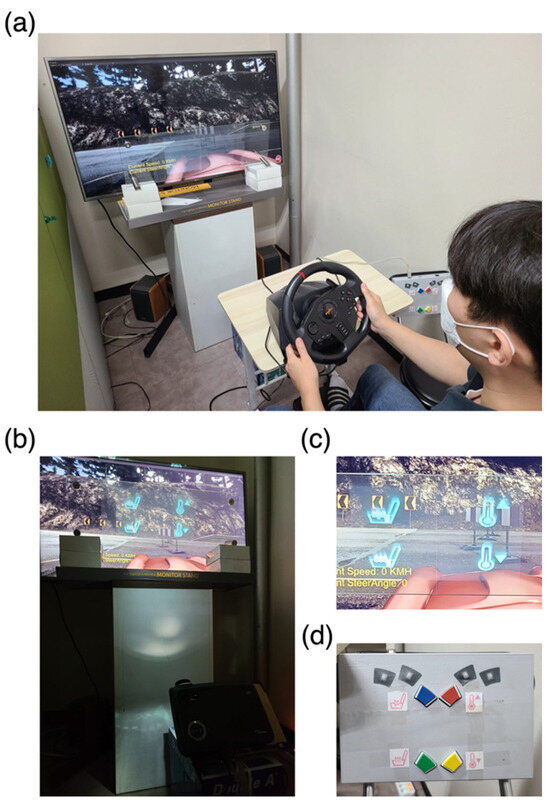
Figure 1
Open AccessArticle
Design of a Shape-Memory-Alloy-Based Carangiform Robotic Fishtail with Improved Forward Thrust
Sensors 2024, 24(2), 544; https://doi.org/10.3390/s24020544 - 15 Jan 2024
Abstract
Shape memory alloys (SMAs) have become the most common choice for the development of mini- and micro-type soft bio-inspired robots due to their high power-to-weight ratio, ability to be installed and operated in limited space, silent and vibration-free operation, biocompatibility, and corrosion resistance
[...] Read more.
Shape memory alloys (SMAs) have become the most common choice for the development of mini- and micro-type soft bio-inspired robots due to their high power-to-weight ratio, ability to be installed and operated in limited space, silent and vibration-free operation, biocompatibility, and corrosion resistance properties. Moreover, SMA spring-type actuators are used for developing different continuum robots, exhibiting high degrees of freedom and flexibility. Spring- or any elastic-material-based antagonistic or biasing force is mostly preferred among all other biasing techniques to generate periodic oscillation of SMA actuator-based robotic body parts. In this model-based study, SMA-based spring-type actuators were used to develop a carangiform-type robotic fishtail. Fin size optimization for the maximization of forward thrust was performed for the developed system by varying different parameters, such as caudal fin size, current through actuators, pulse-width modulation signal (PWM), and operating depth. A caudal fin with a mixed fin pattern between the Lunate and Fork “Lunafork” and a fin area of approximately 5000 mm2 was found to be the most effective for the developed system. The maximum forward thrust developed by this fin was recorded as 40 gmf at an operation depth of 12.5 cm in a body of still water.
Full article
(This article belongs to the Section Intelligent Sensors)
Open AccessArticle
Vibration-Based SHM in the Synthetic Mooring Lines of the Semisubmersible OO-Star Wind Floater under Varying Environmental and Operational Conditions
Sensors 2024, 24(2), 543; https://doi.org/10.3390/s24020543 - 15 Jan 2024
Abstract
As the industry transitions toward Floating Offshore Wind Turbines (FOWT) in greater depths, conventional chain mooring lines become impractical, prompting the adoption of synthetic fiber ropes. Despite their advantages, these mooring lines present challenges in inspection due to their exterior jacket, which prevents
[...] Read more.
As the industry transitions toward Floating Offshore Wind Turbines (FOWT) in greater depths, conventional chain mooring lines become impractical, prompting the adoption of synthetic fiber ropes. Despite their advantages, these mooring lines present challenges in inspection due to their exterior jacket, which prevents visual assessment. The current study focuses on vibration-based Structural Health Monitoring (SHM) in FOWT synthetic mooring lines under uncertainty arising from varying Environmental and Operational Conditions (EOCs). Six damage detection methods are assessed, utilizing either multiple models or a single functional model. The methods are based on Vector Autoregressive (VAR) or Transmittance Function Autoregressive with exogenous input (TF-ARX) models. All methods are evaluated through a Monte Carlo study involving 1100 simulations, utilizing acceleration signals generated from a finite element model of the OO-Star Wind Floater Semi 10 MW wind turbine. With signals from only two measuring positions, the methods demonstrate excellent results, detecting the stiffness reduction of a mooring line at levels 10% through 50%. The methods are also tested for healthy cases, with those utilizing TF-ARX models achieving zero false alarms, even for EOCs not encountered in the training data.
Full article
(This article belongs to the Special Issue Structural Health Monitoring (SHM) and Nondestructive Evaluation (NDE) for Infrastructure and Manufacturing)
Open AccessArticle
Incentive Mechanism for Privacy-Preserving Collaborative Routing Using Secure Multi-Party Computation and Blockchain
by
and
Sensors 2024, 24(2), 542; https://doi.org/10.3390/s24020542 - 15 Jan 2024
Abstract
Traffic congestion results from the spatio-temporal imbalance of demand and supply. With the advances in connected technologies, incentive mechanisms for collaborative routing have the potential to provide behavior-consistent solutions to traffic congestion. However, such mechanisms raise privacy concerns due to their information-sharing and
[...] Read more.
Traffic congestion results from the spatio-temporal imbalance of demand and supply. With the advances in connected technologies, incentive mechanisms for collaborative routing have the potential to provide behavior-consistent solutions to traffic congestion. However, such mechanisms raise privacy concerns due to their information-sharing and execution-validation procedures. This study leverages secure Multi-party Computation (MPC) and blockchain technologies to propose a privacy-preserving incentive mechanism for collaborative routing in a vehicle-to-everything (V2X) context, which consists of a collaborative routing scheme and a route validation scheme. In the collaborative routing scheme, sensitive information is shared through an off-chain MPC protocol for route updating and incentive computation. The incentives are then temporarily frozen in a series of cascading multi-signature wallets in case vehicles behave dishonestly or roadside units (RSUs) are hacked. The route validation scheme requires vehicles to create position proofs at checkpoints along their selected routes with the assistance of witness vehicles using an off-chain threshold signature protocol. RSUs will validate the position proofs, store them on the blockchain, and unfreeze the associated incentives. The privacy and security analysis illustrates the scheme’s efficacy. Numerical studies reveal that the proposed incentive mechanism with tuned parameters is both efficient and implementable.
Full article
(This article belongs to the Special Issue Topical Advisory Panel Members’ Collection Series: Smart Cities in the Digital Age: Balancing Innovation and Security)
Open AccessArticle
Remote Sensing Retrieval of Cloud Top Height Using Neural Networks and Data from Cloud-Aerosol Lidar with Orthogonal Polarization
Sensors 2024, 24(2), 541; https://doi.org/10.3390/s24020541 - 15 Jan 2024
Abstract
In order to enhance the retrieval accuracy of cloud top height (CTH) from MODIS data, neural network models were employed based on Cloud-Aerosol Lidar with Orthogonal Polarization (CALIOP) data. Three types of methods were established using MODIS inputs: cloud parameters, calibrated radiance, and
[...] Read more.
In order to enhance the retrieval accuracy of cloud top height (CTH) from MODIS data, neural network models were employed based on Cloud-Aerosol Lidar with Orthogonal Polarization (CALIOP) data. Three types of methods were established using MODIS inputs: cloud parameters, calibrated radiance, and a combination of both. From a statistical standpoint, models with combination inputs demonstrated the best performance, followed by models with calibrated radiance inputs, while models relying solely on calibrated radiance had poorer applicability. This work found that cloud top pressure (CTP) and cloud top temperature played a crucial role in CTH retrieval from MODIS data. However, within the same type of models, there were slight differences in the retrieved results, and these differences were not dependent on the quantity of input parameters. Therefore, the model with fewer inputs using cloud parameters and calibrated radiance was recommended and employed for individual case studies. This model produced results closest to the actual cloud top structure of the typhoon and exhibited similar cloud distribution patterns when compared with the Cloud-Aerosol Lidar and Infrared Pathfinder Satellite Observation (CALIPSO) CTHs from a climatic statistical perspective. This suggests that the recommended model has good applicability and credibility in CTH retrieval from MODIS images. This work provides a method to improve accurate CTHs from MODIS data for better utilization.
Full article
(This article belongs to the Special Issue Advances in Remote Sensing Image Enhancement and Classification)
Open AccessArticle
A Fusion Algorithm Based on a Constant Velocity Model for Improving the Measurement of Saccade Parameters with Electrooculography
Sensors 2024, 24(2), 540; https://doi.org/10.3390/s24020540 - 15 Jan 2024
Abstract
Electrooculography (EOG) serves as a widely employed technique for tracking saccadic eye movements in a diverse array of applications. These encompass the identification of various medical conditions and the development of interfaces facilitating human–computer interaction. Nonetheless, EOG signals are often met with skepticism
[...] Read more.
Electrooculography (EOG) serves as a widely employed technique for tracking saccadic eye movements in a diverse array of applications. These encompass the identification of various medical conditions and the development of interfaces facilitating human–computer interaction. Nonetheless, EOG signals are often met with skepticism due to the presence of multiple sources of noise interference. These sources include electroencephalography, electromyography linked to facial and extraocular muscle activity, electrical noise, signal artifacts, skin-electrode drifts, impedance fluctuations over time, and a host of associated challenges. Traditional methods of addressing these issues, such as bandpass filtering, have been frequently utilized to overcome these challenges but have the associated drawback of altering the inherent characteristics of EOG signals, encompassing their shape, magnitude, peak velocity, and duration, all of which are pivotal parameters in research studies. In prior work, several model-based adaptive denoising strategies have been introduced, incorporating mechanical and electrical model-based state estimators. However, these approaches are really complex and rely on brain and neural control models that have difficulty processing EOG signals in real time. In this present investigation, we introduce a real-time denoising method grounded in a constant velocity model, adopting a physics-based model-oriented approach. This approach is underpinned by the assumption that there exists a consistent rate of change in the cornea-retinal potential during saccadic movements. Empirical findings reveal that this approach remarkably preserves EOG saccade signals, resulting in a substantial enhancement of up to 29% in signal preservation during the denoising process when compared to alternative techniques, such as bandpass filters, constant acceleration models, and model-based fusion methods.
Full article
(This article belongs to the Special Issue Advanced Sensors and Sensing Technologies in Biomedical Signal Acquisition and Processing)
Open AccessArticle
Reliability and Validity of Shore Hardness in Plantar Soft Tissue Biomechanics
Sensors 2024, 24(2), 539; https://doi.org/10.3390/s24020539 - 15 Jan 2024
Abstract
Shore hardness (SH) is a cost-effective and easy-to-use method to assess soft tissue biomechanics. Its use for the plantar soft tissue could enhance the clinical management of conditions such as diabetic foot complications, but its validity and reliability remain unclear. Twenty healthy adults
[...] Read more.
Shore hardness (SH) is a cost-effective and easy-to-use method to assess soft tissue biomechanics. Its use for the plantar soft tissue could enhance the clinical management of conditions such as diabetic foot complications, but its validity and reliability remain unclear. Twenty healthy adults were recruited for this study. Validity and reliability were assessed across six different plantar sites. The validity was assessed against shear wave (SW) elastography (the gold standard). SH was measured by two examiners to assess inter-rater reliability. Testing was repeated following a test/retest study design to assess intra-rater reliability. SH was significantly correlated with SW speed measured in the skin or in the microchamber layer of the first metatarsal head (MetHead), third MetHead and rearfoot. Intraclass correlation coefficients and Bland–Altman plots of limits of agreement indicated satisfactory levels of reliability for these sites. No significant correlation between SH and SW elastography was found for the hallux, 5th MetHead or midfoot. Reliability for these sites was also compromised. SH is a valid and reliable measurement for plantar soft tissue biomechanics in the first MetHead, the third MetHead and the rearfoot. Our results do not support the use of SH for the hallux, 5th MetHead or midfoot.
Full article
(This article belongs to the Special Issue Advanced Sensors in Biomechanics and Rehabilitation)
►▼
Show Figures
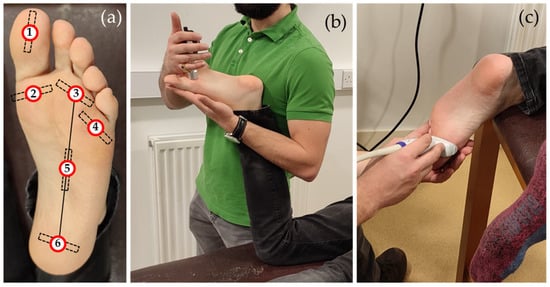
Figure 1
Open AccessArticle
MagnetoShield: A Novel Open-Source Magnetic Levitation Benchmark Device for Mechatronics Education and Research
Sensors 2024, 24(2), 538; https://doi.org/10.3390/s24020538 - 15 Jan 2024
Abstract
This article presents an open-source device illustrating the well-known magnetic levitation experiment. The uniqueness of this particular device lies in its exceptionally small dimensions, affordability and availability, which makes it a perfect design for take-home experiments for education but it can also serve
[...] Read more.
This article presents an open-source device illustrating the well-known magnetic levitation experiment. The uniqueness of this particular device lies in its exceptionally small dimensions, affordability and availability, which makes it a perfect design for take-home experiments for education but it can also serve as a referential design for testing various control algorithms in research. In addition, this paper provides a comprehensive hardware design for reproducibility along with the detailed derivation of the mathematical model, system identification and validation. Moreover, the introduced hardware comes with an easy-to-use open-source application programming interface in C/C++ for the Arduino IDE, Simulink and CircuitPython. REXYGEN, another environment similar to Simulink, had also been used to demonstrate the capabilities of the MagnetoShield.
Full article
(This article belongs to the Special Issue Smart Educational Systems: Hardware and Software Aspects)
►▼
Show Figures
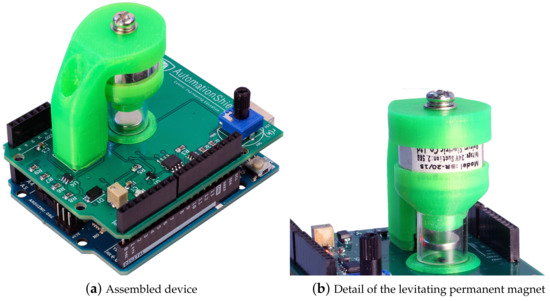
Figure 1
Open AccessArticle
Bite Force Mapping Based on Distributed Fiber Sensing Network Approach
by
, , , , , and
Sensors 2024, 24(2), 537; https://doi.org/10.3390/s24020537 - 15 Jan 2024
Abstract
Bite force measurements are crucial in the realm of biomedical research, particularly in the areas of dentistry and orthodontic care. Various intraoral devices have been used to assess biting force, but each has limitations and drawbacks. Fiber optic sensors (FOSs) offer advantages such
[...] Read more.
Bite force measurements are crucial in the realm of biomedical research, particularly in the areas of dentistry and orthodontic care. Various intraoral devices have been used to assess biting force, but each has limitations and drawbacks. Fiber optic sensors (FOSs) offer advantages such as electrical inertness, immunity to electromagnetic interference, and high sensitivity. Distributed fiber optic sensing allows an increase in the number of sensing points and can interrogate numerous reflections from scattering events within an optical fiber. We present four dental bites with heights of 6 mm, which enabled bilateral measurements. U-shaped sensors were prepared by embedding fibers into silicone by folding a single-mode fiber into four lines and multiplexing eight parallel nanoparticle-doped fibers. Dental bite models were created using two silicone materials (Sorta Clear 18 and Sorta Clear 40). The developed sensors were calibrated by applying weights up to 900 g, resulting in a linear response. Experiments were conducted to compare the efficacy of the dental bites. The collection of massive data was enabled by constructing a 2D map of the dental bites during multi-point sensing.
Full article
(This article belongs to the Special Issue Fiber Optic and Photonic Sensors for Healthcare Monitoring: Technology and Applications)
►▼
Show Figures
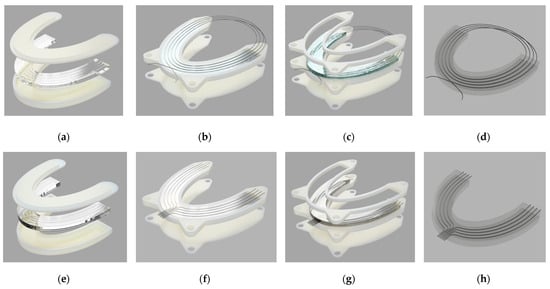
Figure 1
Open AccessArticle
RC-SLAM: Road Constrained Stereo Visual SLAM System Based on Graph Optimization
Sensors 2024, 24(2), 536; https://doi.org/10.3390/s24020536 - 15 Jan 2024
Abstract
Intelligent vehicles are constrained by road, resulting in a disparity between the assumed six degrees of freedom (DoF) motion within the Visual Simultaneous Localization and Mapping (SLAM) system and the approximate planar motion of vehicles in local areas, inevitably causing additional pose estimation
[...] Read more.
Intelligent vehicles are constrained by road, resulting in a disparity between the assumed six degrees of freedom (DoF) motion within the Visual Simultaneous Localization and Mapping (SLAM) system and the approximate planar motion of vehicles in local areas, inevitably causing additional pose estimation errors. To address this problem, a stereo Visual SLAM system with road constraints based on graph optimization is proposed, called RC-SLAM. Addressing the challenge of representing roads parametrically, a novel method is proposed to approximate local roads as discrete planes and extract parameters of local road planes (LRPs) using homography. Unlike conventional methods, constraints between the vehicle and LRPs are established, effectively mitigating errors arising from assumed six Degrees of Freedom (DoF) motions in the system. Furthermore, to avoid the impact of depth uncertainty in road features, epipolar constraints are employed to estimate rotation by minimizing the distance between road feature points and epipolar lines, robust rotation estimation is achieved despite depth uncertainties. Notably, a distinctive nonlinear optimization model based on graph optimization is presented, jointly optimizing the poses of vehicle trajectories, LPRs, and map points. The experiments on two datasets demonstrate that the proposed system achieved more accurate estimations of vehicle trajectories by introducing constraints between the vehicle and LRPs. The experiments on a real-world dataset further validate the effectiveness of the proposed system.
Full article
(This article belongs to the Topic Information Sensing Technology for Intelligent/Driverless Vehicle, 2nd Volume)
►▼
Show Figures
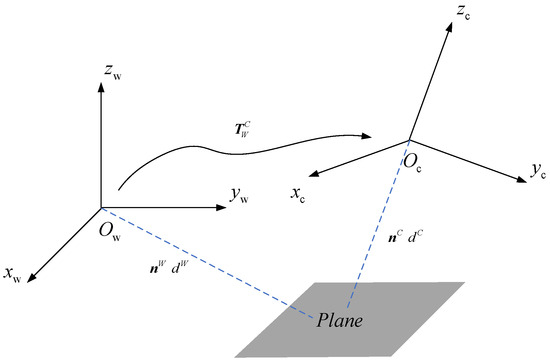
Figure 1
Open AccessArticle
The Threat of Disruptive Jamming to Blockchain-Based Decentralized Federated Learning in Wireless Networks
by
and
Sensors 2024, 24(2), 535; https://doi.org/10.3390/s24020535 - 15 Jan 2024
Abstract
Machine learning techniques have attracted considerable attention for wireless networks because of their impressive performance in complicated scenarios and usefulness in various applications. However, training with and sharing raw data obtained locally from each wireless node does not guarantee privacy and requires a
[...] Read more.
Machine learning techniques have attracted considerable attention for wireless networks because of their impressive performance in complicated scenarios and usefulness in various applications. However, training with and sharing raw data obtained locally from each wireless node does not guarantee privacy and requires a large communication overhead. To mitigate such issues, federated learning (FL), in which sharing parameters for model updates are shared instead of raw data, has been developed. FL has also been studied using blockchain techniques to efficiently perform learning in distributed wireless systems without having to deploy a centralized server. Although blockchain-based decentralized federated learning (BDFL) is a promising technique for various wireless sensor networks, malicious attacks can still occur, which result in performance degradation or malfunction. In this study, we analyze the impact of a jamming threats from malicious miners to BDFL in wireless networks. In a wireless BDFL system, it is possible for malicious miners with jamming capability to interfere with the collection of model parameters by normal miners, thus preventing the victim miner from generating a global model. By disrupting normal miners participating in BDFL systems, malicious miners with jamming capability can more easily add malicious data to the mainstream. Through various simulations, we evaluated the success probability performance of malicious block insertion and the participation rate of normal miners in a wireless BDFL system.
Full article
(This article belongs to the Special Issue New Challenges to Secure and Intelligent IoT Sensor Systems and Applications)
►▼
Show Figures

Figure 1
Open AccessArticle
Comparison of Shoulder Range of Motion Quantified with Mobile Phone Video-Based Skeletal Tracking and 3D Motion Capture—Preliminary Study
Sensors 2024, 24(2), 534; https://doi.org/10.3390/s24020534 - 15 Jan 2024
Abstract
Background: The accuracy of human pose tracking using smartphone camera (2D-pose) to quantify shoulder range of motion (RoM) is not determined. Methods: Twenty healthy individuals were recruited and performed shoulder abduction, adduction, flexion, or extension, captured simultaneously using a smartphone-based human pose estimation
[...] Read more.
Background: The accuracy of human pose tracking using smartphone camera (2D-pose) to quantify shoulder range of motion (RoM) is not determined. Methods: Twenty healthy individuals were recruited and performed shoulder abduction, adduction, flexion, or extension, captured simultaneously using a smartphone-based human pose estimation algorithm (Apple’s vision framework) and using a skin marker-based 3D motion capture system. Validity was assessed by comparing the 2D-pose outcomes against a well-established 3D motion capture protocol. In addition, the impact of iPhone positioning was investigated using three smartphones in multiple vertical and horizontal positions. The relationship and validity were analysed using linear mixed models and Bland-Altman analysis. Results: We found that 2D-pose-based shoulder RoM was consistent with 3D motion capture (linear mixed model: R2 > 0.93) but was somewhat overestimated by the smartphone. Differences were dependent on shoulder movement type and RoM amplitude, with adduction the worst performer among all tested movements. All motion types were described using linear equations. Correction methods are provided to correct potential out-of-plane shoulder movements. Conclusions: Shoulder RoM estimated using a smartphone camera is consistent with 3D motion-capture-derived RoM; however, differences between the systems were observed and are likely explained by differences in thoracic frame definitions.
Full article
(This article belongs to the Special Issue Advanced Sensors in Biomechanics and Rehabilitation)
►▼
Show Figures
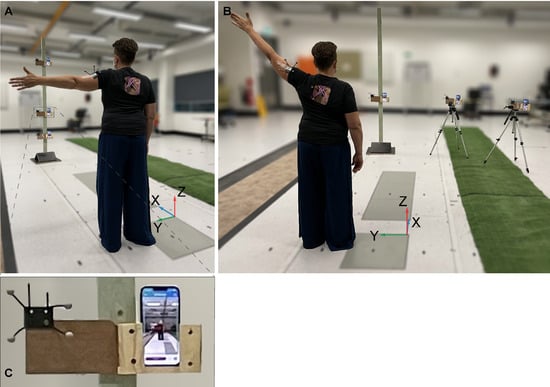
Figure 1
Open AccessArticle
Energy Consumption Analysis for Continuous Phase Modulation in Smart-Grid Internet of Things of beyond 5G
Sensors 2024, 24(2), 533; https://doi.org/10.3390/s24020533 - 15 Jan 2024
Abstract
Wireless sensor network (WSN) underpinning the smart-grid Internet of Things (SG-IoT) has been a popular research topic in recent years due to its great potential for enabling a wide range of important applications. However, the energy consumption (EC) characteristic of sensor nodes is
[...] Read more.
Wireless sensor network (WSN) underpinning the smart-grid Internet of Things (SG-IoT) has been a popular research topic in recent years due to its great potential for enabling a wide range of important applications. However, the energy consumption (EC) characteristic of sensor nodes is a key factor that affects the operational performance (e.g., lifetime of sensors) and the total cost of ownership of WSNs. In this paper, to find the modulation techniques suitable for WSNs, we investigate the EC characteristic of continuous phase modulation (CPM), which is an attractive modulation scheme candidate for WSNs because of its constant envelope property. We first develop an EC model for the sensor nodes of WSNs by considering the circuits and a typical communication protocol that relies on automatic repeat request (ARQ)-based retransmissions to ensure successful data delivery. Then, we use this model to analyze the EC characteristic of CPM under various configurations of modulation parameters. Furthermore, we compare the EC characteristic of CPM with that of other representative modulation schemes, such as offset quadrature phase-shift keying (OQPSK) and quadrature amplitude modulation (QAM), which are commonly used in communication protocols of WSNs. Our analysis and simulation results provide insights into the EC characteristics of multiple modulation schemes in the context of WSNs; thus, they are beneficial for designing energy-efficient SG-IoT in the beyond-5G (B5G) and the 6G era.
Full article
(This article belongs to the Special Issue From 5G-Advanced to 6G Wireless Networks: Fundamental Theories and Key Technologies)
►▼
Show Figures

Figure 1

Journal Menu
► ▼ Journal Menu-
- Sensors Home
- Aims & Scope
- Editorial Board
- Reviewer Board
- Topical Advisory Panel
- Instructions for Authors
- Special Issues
- Topics
- Sections & Collections
- Article Processing Charge
- Indexing & Archiving
- Editor’s Choice Articles
- Most Cited & Viewed
- Journal Statistics
- Journal History
- Journal Awards
- Society Collaborations
- Conferences
- Editorial Office
Journal Browser
► ▼ Journal Browser-
arrow_forward_ios
Forthcoming issue
arrow_forward_ios Current issue - Vol. 24 (2024)
- Vol. 23 (2023)
- Vol. 22 (2022)
- Vol. 21 (2021)
- Vol. 20 (2020)
- Vol. 19 (2019)
- Vol. 18 (2018)
- Vol. 17 (2017)
- Vol. 16 (2016)
- Vol. 15 (2015)
- Vol. 14 (2014)
- Vol. 13 (2013)
- Vol. 12 (2012)
- Vol. 11 (2011)
- Vol. 10 (2010)
- Vol. 9 (2009)
- Vol. 8 (2008)
- Vol. 7 (2007)
- Vol. 6 (2006)
- Vol. 5 (2005)
- Vol. 4 (2004)
- Vol. 3 (2003)
- Vol. 2 (2002)
- Vol. 1 (2001)
Highly Accessed Articles
Latest Books
E-Mail Alert
News
Topics
Topic in
AI, Applied Sciences, Electronics, IJGI, Remote Sensing, Robotics, Sensors
Artificial Intelligence in Navigation
Topic Editors: Arpad Barsi, Eliseo ClementiniDeadline: 20 January 2024
Topic in
Applied Sciences, Architecture, Sensors, Smart Cities, Sustainability, Robotics, Buildings
Peaceful and Secure Cities
Topic Editors: Jarosław Górecki, Pedro Núñez-Cacho, Valentín Molina-MorenoDeadline: 31 January 2024
Topic in
Aerospace, Applied Sciences, Automation, Drones, Remote Sensing, Sensors
Target Tracking, Guidance, and Navigation for Autonomous Systems
Topic Editors: Won-Sang Ra, Shaoming He, Ivan MasmitjaDeadline: 20 February 2024
Topic in
Aerospace, Applied Sciences, Remote Sensing, Sensors, Universe, Data
Techniques and Science Exploitations for Earth Observation and Planetary Exploration
Topic Editors: Yu Tao, Siting Xiong, Rui SongDeadline: 31 March 2024

Conferences
Special Issues
Special Issue in
Sensors
Applications of Body Worn Sensors and Wearables
Guest Editor: Bijan NajafiDeadline: 20 January 2024
Special Issue in
Sensors
Optical Sensing for Chemical Application
Guest Editors: Barry K. Lavine, Karl BookshDeadline: 25 January 2024
Special Issue in
Sensors
RFID and Zero-Power Backscatter Sensors
Guest Editors: Antonio Lázaro, David Girbau, Ramon VillarinoDeadline: 15 February 2024
Special Issue in
Sensors
Deep Learning for Nondestructive Detection and Analysis Using Hyperspectral Imaging
Guest Editor: Seung-Chul YoonDeadline: 20 February 2024
Topical Collections
Topical Collection in
Sensors
Robotic and Sensor Technologies in Environmental Exploration and Monitoring
Collection Editors: Jacopo Aguzzi, Corrado Costa, Sergio Stefanni, Valerio Funari
Topical Collection in
Sensors
Microfluidic Sensors
Collection Editors: Sabina Merlo, Klaus Stefan Drese




